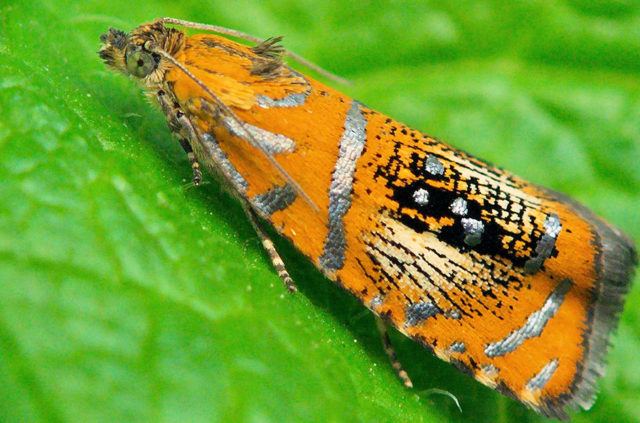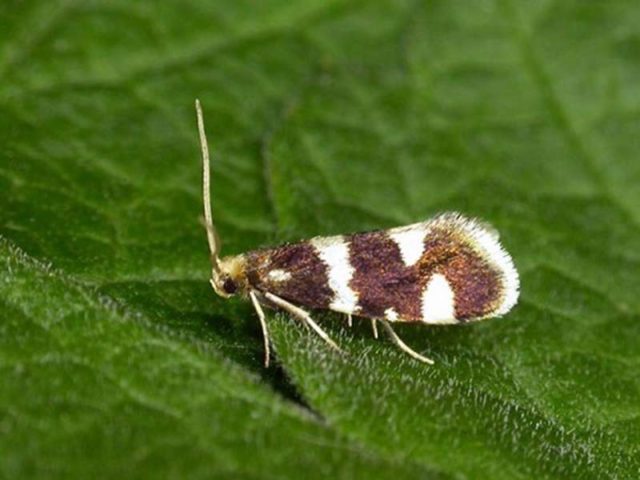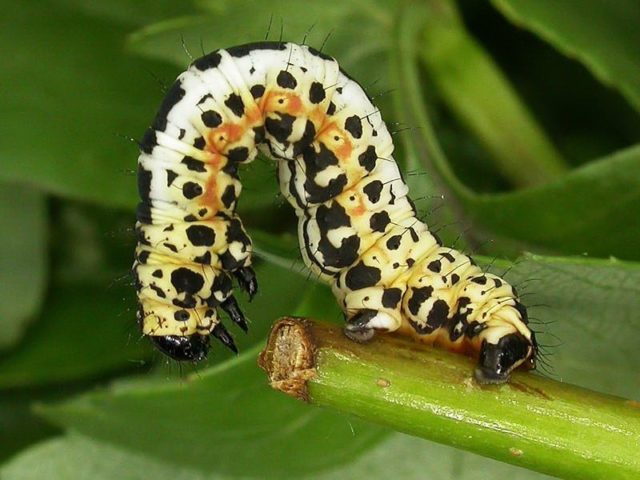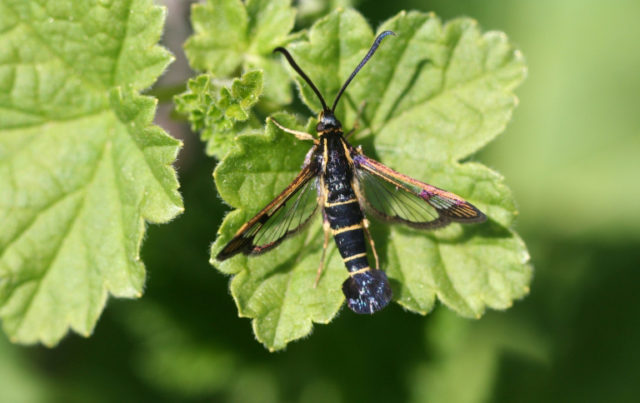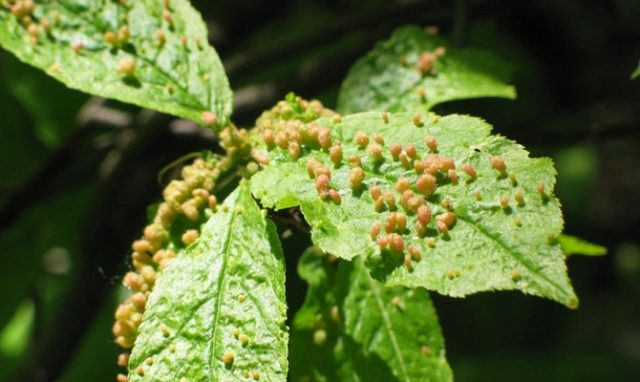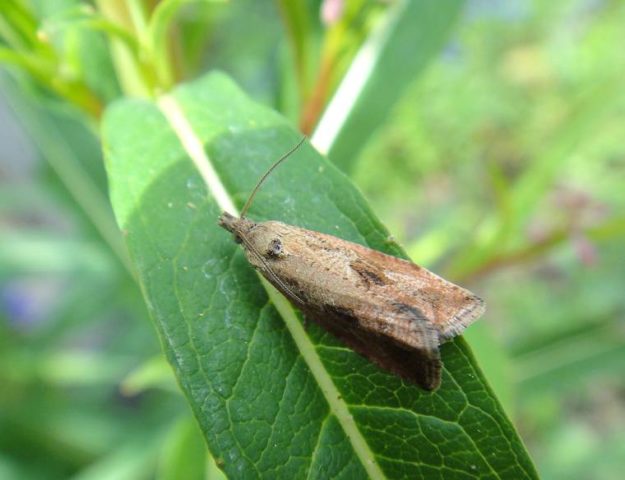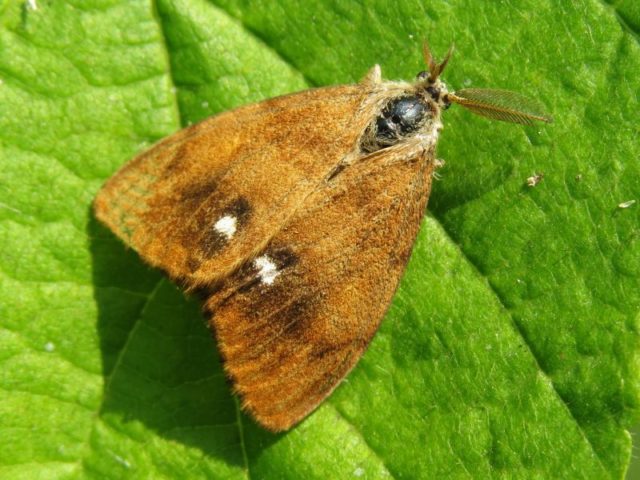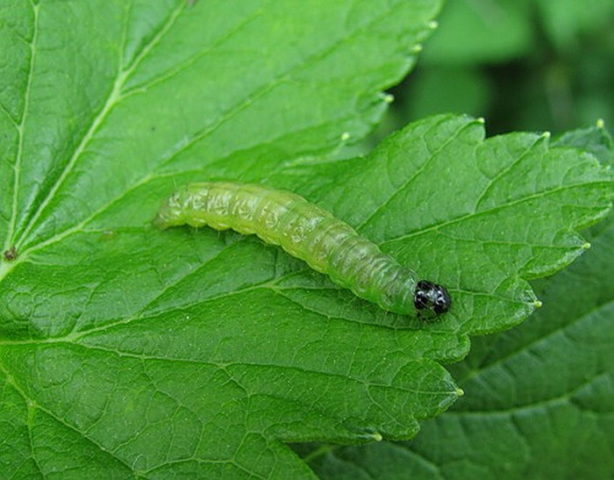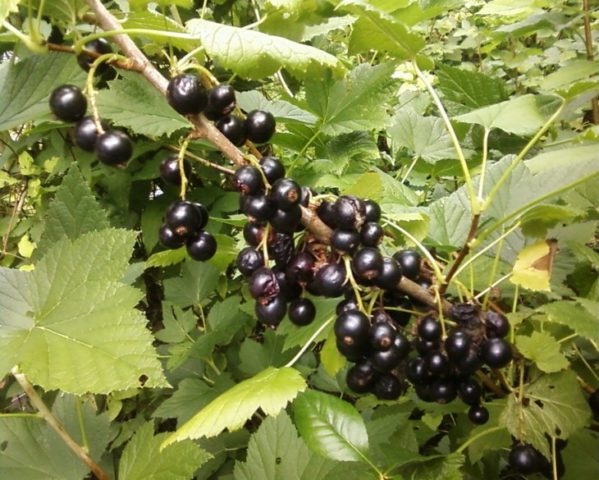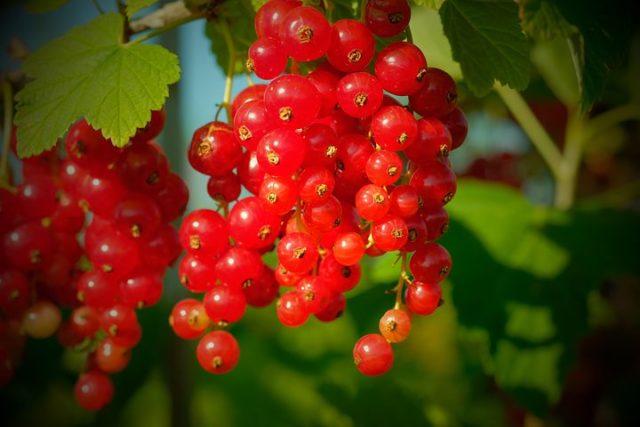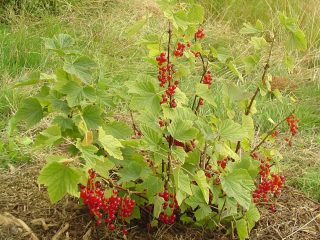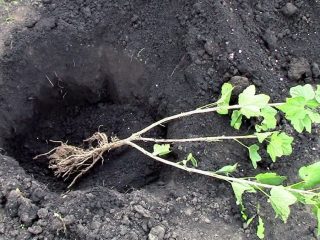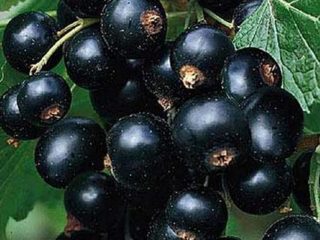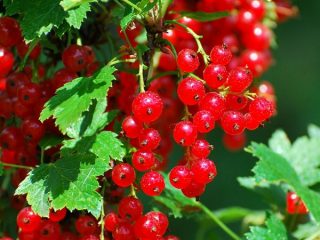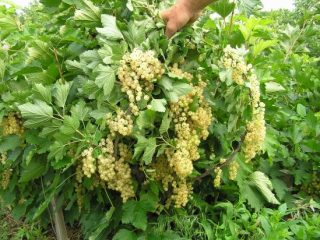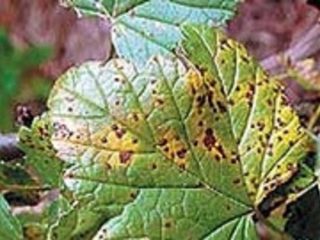Content
Caterpillars on currants completely eat the leaves - many gardeners face this problem. Parasites on the stems and leaves of the plant can completely destroy the crop, but there are many methods for controlling currant pests.
Types of currant caterpillars
First of all, you need to understand that there are a lot of currant pests - caterpillars can appear when a bush is infected by a variety of insects. It is useful to know the main types of garden pests - this will help you recognize which caterpillars have infected the shrub and choose the most suitable treatment product.
leaf roller
This pest can be recognized by the appearance of green or brown caterpillars on the leaves of the bush; first, they actively eat the foliage and stems, and then entangle the leaves with cobwebs and feed on the juices of the plant before hatching. The adult leaf roller is a light brown moth with stripes on its wings.
Bud moth
The parasite lays eggs in the ovaries and young buds of the bush, and the hatched gray or yellow-brown larvae begin to eat the plant from the inside. This leads to the fact that part of the ovaries of the bush dries out, and the yield of the plant decreases sharply. The formed bud moth is a small insect about 1.5-2 cm in wingspan with a rather beautiful white-brown color.
Moth
A large yellow butterfly lays eggs in early spring on the inside of currant leaves, mostly white and red. Moth larvae completely eat up the leaves of the plant and can lead to the complete death of the currant bush if they are not eliminated in time.
Glassware
An adult insect, similar in appearance to a wasp, lays clutches in the buds of a currant or in the folds of the bark on its trunk. The caterpillars that hatch from the larvae first eat up the shoots from the inside, and then begin to move along the stems to the roots. This is precisely why glass is dangerous; if the caterpillars eat the roots of the bush, then it will no longer be possible to save the plant from death. At the same time, glassware is extremely difficult to remove, and considerable effort must be made to remove it.
Sawfly
Small black beetles lay eggs on the leaves of the bush, and the caterpillars eat the foliage down to the veins; if the sawfly multiplies heavily on the bush, the currant may remain completely bare. Moreover, in one summer, the sawfly can produce up to 3 broods of caterpillars, which greatly complicates the fight against the pest.
Gallica
The parasite, which looks like a mosquito, in the caterpillar phase eats mainly the tissue of currant stems, as a result of which black swellings appear under the bark.Mostly the gall midge prefers to feast on black currants, but the parasite can be found on both red and white varieties.
Gooseberry moth
The parasite is a gray butterfly that attacks currant flowers, as well as raspberry and gooseberry bushes. Moth caterpillars entangle the fruits of berry bushes in a thin web and draw juices out of them, as a result the berries dry out and become unsuitable for picking.
Brushtail
Currants often harbor a beetle caterpillar, or brushtail, another pest butterfly with a beautiful reddish-brown color. The caterpillar feeds on the leaves of the plant and is especially dangerous for the reason that it lays up to 400 eggs at a time - infection of currants by the stinging bug can occur very quickly and abundantly.
Why do currants have caterpillars?
The buds, leaves, fruits and all other parts of the currant are a breeding ground for the caterpillars - the pests eat the leaves to continue their life cycle. However, this does not clarify the question of why parasites appear on some bushes very often, while others are almost never affected by caterpillars.
As a rule, caterpillars appear on the bushes of fruit plants if the rules for caring for the bush are not followed. If a gardener neglects regular sanitary pruning of bushes, does not remove broken and dried branches and does not remove plant debris from the soil at the roots, then sooner or later pests may take a liking to the bush.Fallen leaves and small twigs near currant bushes provide the caterpillar larvae with winter shelter - the pests safely wait out the frosts in the ground, and in the spring they move to the currant bush and begin to feed on fresh greens.
Why are caterpillars dangerous for currants?
The presence of caterpillars on currant bushes not only worsens the appearance and decorativeness of the bush. This becomes the least of the problems.
- The newly hatched caterpillars can completely eat the currant foliage. Most pests begin to feed on the plant from the leaves, which contain a huge amount of nutrients. If the parasites are not eliminated in time, the currant may be eaten entirely.
- Caterpillars eat not only green foliage, but also inflorescences, ovaries and rudiments of shrub berries. Thus, with widespread damage to the bush, currants either begin to bloom and bear fruit worse, or stop producing crops - the parasites destroy the fruits before they reach full maturity and become suitable for harvesting.
- Caterpillars feed on the stems and even roots of shrubs. This is especially dangerous because the skeleton of the plant itself is destroyed - if the pests are not destroyed in time, the bush may die entirely, since it will be left without a root system and main shoots.
Currants infected with pests stop producing a sufficient amount of tasty, healthy berries. Its varietal characteristics deteriorate significantly - the shrub becomes more sensitive to growing conditions and vulnerable, stops developing and ultimately dies.
What to do with caterpillars on currants
If caterpillars of one or another pest have appeared on currant bushes, they definitely need to be removed.In gardening, both traditional methods and specialized means are used for this.
Mechanical methods of struggle
The most obvious and simple way to combat caterpillars on currants is mechanical removal of insects. The following methods are practiced:
- shaking off - spread paper or light thick fabric under the currant bush, and then take the branches and shake them properly, as a result of which the caterpillars simply fall off the leaves onto the prepared litter;
- manual collection — currant leaves and stems are regularly inspected and caterpillars and nests of pests are removed from them manually, in order to then be taken outside the site and destroyed;
- Withscraping - if the trunk and shoots of the currant are damaged, you can remove caterpillars and larvae with a hard-bristle toothbrush or even a metal sponge dipped in a soap solution.
Despite their simplicity, mechanical methods have a serious drawback. They are not 100% effective; using these methods cannot remove absolutely all caterpillars and larvae from a currant bush. Meanwhile, even a few parasites remaining on the bush continue to negatively affect the condition of the plant, and over time they increase the population again.
Chemicals
Proven chemical preparations provide a more noticeable and high-quality effect against caterpillars. Namely:
- Karbofos 10% — it is used against bud moths twice during the summer, the first time the product should be used after the buds open on the bush;
- Karbofos 0.3% - currants are treated against moths, spraying is carried out in April, during the active development of buds, and in June, when the butterflies of the garden pest hatch;
- Iskra-Bio and Fufanon - currants are sprayed with solutions against sawfly and moth, the procedure is carried out before the bush blooms and immediately after it;
- Fitoverm - the product is sprayed on currants immediately after fresh leaves appear, this helps prevent the bush from becoming infected with glass.
You can also spray currant bushes against the glassworm caterpillar with a 10% Karbofos solution; this is usually done in the fall, after harvesting, for preventive purposes.
Biological drugs
In addition to chemical insecticides, biological preparations are in demand among gardeners. The difference is that the active ingredients in biological products are toxic to caterpillars, but do not harm currant fruits and do not affect the benefits of the berries. The effect is achieved due to the fact that the attack on pests is carried out through viruses and pathogenic fungi that are destructive to garden caterpillars.
Biological drugs include:
- Lepidocide and Nembact;
- Endobacterin;
- Bitoxibacillin.
Traditional methods
Some gardeners are afraid to treat currants against caterpillars with insecticidal preparations and prefer to use folk remedies. Among the most popular are the following.
- Laundry soap solution. A bar of natural soap with a volume of about 50 g must be dissolved in 1 liter of water until a homogeneous soap solution is obtained.After this, the bushes are sprayed with a soapy solution, and if necessary, the leaves that are especially severely affected are wiped by hand.
- Mustard. About 50 g of powder should be diluted in 3 liters of water, and then sprayed with the resulting solution on the currant bush. Mustard has a detrimental effect on insect caterpillars and allows you to quickly get rid of pests on leaves and stems.
- Garlic infusion. Several large cloves of fresh garlic need to be poured into 1 liter of water and left for a week, covered. When the infusion is ready, before use it will need to be diluted with fresh water in a ratio of 1 to 10. Otherwise, a sharp infusion can not only eliminate the caterpillars, but also harm the currants, as it will leave burns on the leaves and stems of the plant.
- Pepper infusion. The folk remedy acts similarly to garlic tincture and is prepared in approximately the same way - 100 g of hot pepper is poured into 1 liter of boiling water and left for several days. Before use, the infusion can be diluted in a ratio of 1 to 10 with ordinary clean water, or you can prefer a soap solution, in which case the effectiveness will only increase.
Folk remedies bring quite a good effect in the fight against caterpillars of garden pests. However, they may not act as quickly as insecticides and biological products; it is likely that several treatments will have to be carried out for a severely affected currant bush.
Preventive actions
If caterpillars on currant bushes are noticed in a timely manner, then getting rid of them is quite easy.But it’s even better, in principle, to prevent pests from appearing on the fruit bush. Preventive measures help protect the plant from caterpillars.
- Currant bushes must be pruned regularly. Sanitary pruning allows you to get rid of dry and diseased branches, extra shoots that thicken the bush, and broken branches. Statistics show that unkempt currants are affected by garden pests much more often, and it is much more difficult to cure such a shrub.
- You need to carefully monitor the cleanliness of the soil around the currant plantings. Every spring and fall, all fallen leaves and broken twigs from the ground must be removed so that they do not form an ideal winter shelter for pest larvae.
- In autumn, the soil around the currants needs to be dug up, adding wood ash or tobacco powder to it in the process; these agents interfere with the vital activity of the larvae and do not allow them to develop. It is also recommended to mulch the soil around the bush in the fall with a layer of 5-10 cm; in this case, in the spring it will be more difficult for the caterpillars to get to the surface of the soil and move on to the currants.
- For prevention purposes, it is recommended to plant plants such as garlic, yarrow, wormwood and chamomile, as well as other herbs with medicinal properties and a pungent odor, next to currant bushes. Such currant neighbors will repel harmful insects with their aroma and protect the bush from damage by caterpillars.
Even if the currant has never been sick or affected by garden pests over several years of cultivation, its leaves and stems must be inspected annually for nests and insect larvae. Caterpillars that are quickly spotted are much easier to remove using both folk and specialized means.
Conclusion
Caterpillars on currants completely eat the leaves, but harmful insects can be quickly removed in several effective ways. The main thing is not to forget about prevention and inspect the bush more often so as not to miss the moment when harmful caterpillars appear on the leaves.
